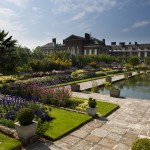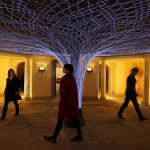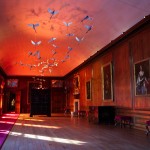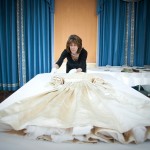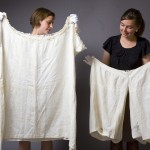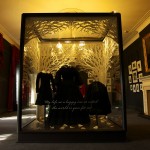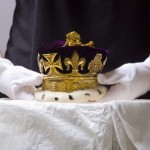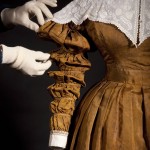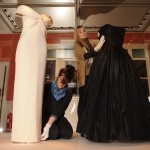Kensington Palace: royal rip-off to must-see tourist attraction
New renovations are spectacular, with special attention paid to the palace’s most famous residents, Victoria and Di
Photograph courtesy of Historic Royal Palaces
Share

Neglect is nothing new to Kensington Palace. For centuries it’s gone through phases of being ignored, then gussied up only to sink back into its backwater position, albeit one with one of the poshest addresses in London. Now, a huge renovation of the palace’s public spaces has transformed it from one of the biggest tourist rip-offs in London to one of the hottest tickets in town.
Originally the earl of Nottingham’s mansion, Kensington Palace became a royal residence after William III bought the starter home in 1689 and set his favourite architect, Christopher Wren, loose. The result was a residence fit for a sovereign, complete with royal apartments, state rooms and even an exclusive chapel. However, by George II’s reign, it had fallen on hard times. Half the building was shuttered and the rest was in disrepair. His son George III spent much of his time at his other London residence, St. James’s Palace—not to mention a stint at Kew Palace, locked up. In the meantime, relations moved into Kensington Palace; as with every family, there are always members looking for a nice crib. One was his son, the duke of Kent.
Its fortunes changed again when the Kent’s daughter was born in 1819. Her name was Victoria. Soon the residence was buzzing with life. But it wouldn’t last. After her father’s death, the princess grew up in isolated splendour, never left alone and never allowed to spread her wings. She only got to sleep by herself after she acceded the throne in 1837. She decamped as soon as she could to the newly renovated Buckingham Palace, never to return to Kensington. Still, Victoria must have had some attachment to the place because she refused a request to turn the palace into the National Gallery, and instead let her large extended family live there. In fact, so many were housed there that the future duke of Windsor called it the “aunts’ heap.”
That tradition, even after Kensington was badly damaged by bombs during the Second World War, continued: Charles and Diana spent their married life there with William and Harry, and Diana continued to live there after she separated from Charles. And, in addition to apartments for senior officials, the duke of Gloucester and his family have homes in the “occupied” sections of the palace, as does Prince and Princess Michael of Kent. And, of course, Willam and Kate are taking Apartment 1A, former home of the late Princess Margaret, once renovations, including removing asbestos, are completed.
Unfortunately the “unoccupied” part of the palace, including the state rooms, has once more been unappreciated, by officials and tourists alike. It is run by Historic Royal Palaces, the charity that runs all “unoccupied royal palaces,” that gets no government financing. So upkeep is a challenge, especially in a building so historic that pounding a nail into a closet requires umpteen layers of approval (think colour-coded forms, all in triplicate). The charity has brought in much-needed revenue by renting out its famous venues, including its sprawling state rooms for events of all shapes and sizes. “You’ve got your prince; we’ve got your palace” is one of its mottos. Their website has all the particulars, and price lists, needed to rent spaces, including the Orangery, with its “expansive lawns perfect for marquees for up to 1,000 guests.” (My bet is that it’s going to be ultra busy during the Summer Olympics.)
While perfect for events, the palace was less than enthralling for visitors to London’s capital. After they plunked down $20 for an adult ticket, they got little for their money but a stroll through a confusing maze of rooms devoid of interesting features, listening to a boring commentary on what used to be here or was once there.
Now, finally, Historic Royal Palaces has unveiled the results of a $20-million renovation aimed squarely at getting more tourists to tramp through its corridors. The results are nothing short of stunning. After closing for three months, there is a new entrance, new gardens, plus four redesigned routes through the building. Old mistakes, such as turning the Red Saloon, where Victoria held her first Privy Council meeting, into a ticket office have been rectified. While the focus is on its history, the new Kensington heavily leans on its most famous female occupants—Victoria and Princess Di. And amid all the gilding and wood panelling are unexpected touches of modern life, such as wild cartoonish wallpaper featuring Diana throughout the years and a spectacular light installation in the new entryway.
Finally, the palace gets its chance to shine, and just in time for the biggest royal event in decades—the Queen’s Diamond Jubilee.
Photograph courtesy of Historic Royal Palaces Photograph courtesy of Historic Royal Palaces Photograph courtesy of Historic Royal Palaces Photograph courtesy of Historic Royal Palaces Photograph courtesy of Historic Royal Palaces Photograph courtesy of Historic Royal Palaces Photograph courtesy of Historic Royal Palaces Photograph courtesy of Historic Royal Palaces Photograph courtesy of Historic Royal Palaces Photograph courtesy of Historic Royal Palaces Photograph courtesy of Historic Royal Palaces Photograph courtesy of Historic Royal Palaces

